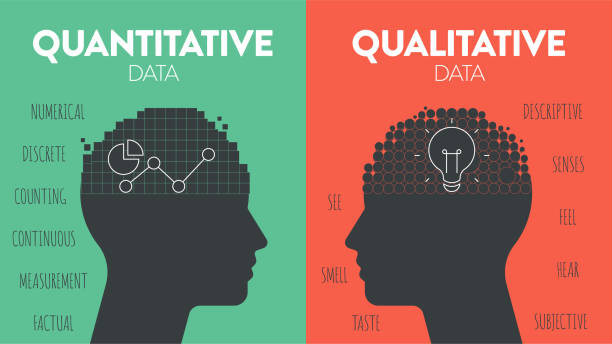Have you ever wondered how businesses make the best decisions based on their market research? What’s the secret behind companies’ ability to predict trends, understand customer behavior, and outperform competitors? The answer lies in effective data analysis methods. With the increasing amount of information available today, market research has become more critical than ever. Yet, many businesses struggle with transforming raw data into actionable insights.
So, how can you ensure that your business uses data analysis methods to their full potential? What are the most crucial techniques to apply in market research to help shape your strategies and drive business growth? In this blog post, we’ll dive deep into the most effective data analysis methods used in market research, explore their benefits, and give you practical ways to apply them to achieve better results. By the end, you’ll have a clear understanding of the methods you can use to unlock valuable insights that can transform your business.
The Importance of Data Analysis in Market Research
Before we dive into the methods, let’s take a moment to understand why data analysis is a crucial part of market research. In today’s fast-paced digital world, businesses need to make decisions based on accurate, up-to-date information. Whether you’re looking to launch a new product, enter a new market, or improve customer satisfaction, data analysis plays a key role in helping you make informed decisions.
With the help of market research, companies can:
- Identify consumer trends and preferences
- Evaluate market demand and competition
- Determine the effectiveness of marketing campaigns
- Improve product development based on customer feedback
- Discover potential risks and opportunities
Simply put, data analysis enables businesses to understand their customers and markets more deeply, paving the way for strategic decisions that drive success.
1. Descriptive Analysis: The Foundation of Understanding Your Data – Data Analysis Methods
When you look at data for the first time, it can be overwhelming. How do you make sense of it? Descriptive analysis is the foundation of data analysis in market research, providing a clear snapshot of what has happened in the past. By summarizing historical data, descriptive analysis helps businesses understand trends, patterns, and key metrics.
Key techniques within descriptive analysis include:
- Mean, Median, and Mode: These measures of central tendency provide insights into what is typical or average within your data set.
- Data Distribution and Frequency Analysis: This method helps identify the spread of data and frequency of occurrences, allowing businesses to spot significant outliers.
- Trend Analysis: This technique looks at how data points evolve over time, helping you predict future behaviors or events.
For example, when analyzing sales performance, descriptive analysis can help you determine which products performed the best last quarter or which customer demographics generated the most revenue.
2. Diagnostic Analysis: Digging Deeper to Uncover Causes
While descriptive analysis tells you what has happened, diagnostic analysis helps you understand why it happened. This method goes beyond the surface to identify the root causes behind specific trends and behaviors. It’s especially helpful when trying to solve business problems or figure out why certain aspects of your business may not be performing as expected.
For example, if your sales dropped during a specific period, diagnostic analysis would look at factors like:
- Seasonal variations
- Pricing changes
- Competitive actions
- Shifts in consumer behavior
- External economic factors
By conducting diagnostic analysis, businesses can pinpoint issues and make the necessary adjustments to improve their strategies.
3. Predictive Analysis: Forecasting Future Trends – Data Analysis Methods
What does the future hold for your business? Predictive analysis answers that question by analyzing historical data to forecast future outcomes. This method uses statistical algorithms, machine learning models, and data mining techniques to identify patterns and predict what is likely to happen in the future.
Predictive analysis can help businesses with:
- Demand forecasting
- Market trend predictions
- Customer behavior forecasting
- Risk management
For example, by analyzing past purchase data, a company could predict which products are likely to become popular in the coming months or even anticipate seasonal spikes in demand. Understanding these trends gives businesses a competitive edge, enabling them to adjust their strategies accordingly and plan for the future.

4. Prescriptive Analysis: Optimizing Decision-Making
Once businesses understand past trends and future predictions, they need to know the best course of action moving forward. Prescriptive analysis is the next step, helping businesses optimize their decision-making by providing actionable recommendations. This method uses advanced algorithms and optimization techniques to suggest the most effective strategies based on existing data.
Prescriptive analysis can be particularly useful in areas such as:
- Pricing strategy optimization
- Supply chain management
- Marketing campaign effectiveness
- Resource allocation
For instance, if a company wants to maximize sales during a holiday season, prescriptive analysis can help determine the best pricing strategy, promotional offers, and product inventory levels to achieve the highest return on investment.
5. Text Analysis: Understanding Sentiment and Consumer Feedback – Data Analysis Methods
In the age of social media and online reviews, text analysis has become an indispensable tool in market research. This method involves analyzing unstructured text data from sources such as customer reviews, social media posts, and open-ended survey responses to extract valuable insights. Text analysis can uncover sentiments, opinions, and preferences that may not be evident through numerical data alone.
The key techniques in text analysis include:
- Sentiment Analysis: This technique identifies the overall sentiment of a piece of text, whether it’s positive, negative, or neutral. It helps businesses gauge public opinion about products, services, or brands.
- Topic Modeling: This process identifies recurring themes or topics in large volumes of text, allowing businesses to understand customer concerns or interests more clearly.
- Text Classification: This method categorizes text into predefined categories, such as customer complaints, product features, or brand mentions.
Using text analysis, businesses can uncover deep insights into consumer perceptions and adjust their strategies to improve customer satisfaction.
6. Cluster Analysis: Segmenting Your Market for Better Targeting
In market research, not all customers are the same. Cluster analysis helps businesses identify groups of customers with similar characteristics or behaviors, allowing for more effective segmentation and targeted marketing strategies. This method divides large data sets into smaller, more manageable clusters based on various attributes such as age, income, location, and purchasing habits.
With cluster analysis, businesses can:
- Tailor marketing campaigns to specific customer segments
- Personalize product recommendations
- Identify underserved market segments
- Improve customer retention through targeted offers
For example, a clothing retailer might use cluster analysis to segment customers into groups based on their shopping preferences, such as casual wear versus formal wear, allowing them to deliver more relevant advertising and promotions.
7. Regression Analysis: Uncovering Relationships Between Variables – Data Analysis Methods
What factors influence customer behavior or sales performance? Regression analysis helps answer this question by examining the relationship between two or more variables. This method is particularly useful for identifying the strength and nature of the relationships between independent variables (such as marketing spend or website traffic) and dependent variables (such as sales or customer engagement).
For example, businesses can use regression analysis to determine how much an increase in advertising spend will impact sales or how website traffic influences conversion rates. By understanding these relationships, companies can optimize their strategies to achieve the best results.
8. A/B Testing: Measuring the Effectiveness of Changes
A/B testing, also known as split testing, is a valuable method for evaluating the effectiveness of changes made to products, websites, or marketing campaigns. By comparing two versions of a variable (such as a webpage, advertisement, or email), businesses can determine which one performs better based on specific metrics like conversion rates or click-through rates.
A/B testing is commonly used for:
- Website optimization (e.g., testing different landing pages)
- Email marketing campaigns (e.g., testing subject lines)
- Social media advertising (e.g., testing ad creatives)
By conducting A/B tests, businesses can make data-driven decisions that increase the likelihood of success and improve their return on investment.

Conclusion: Data Analysis Methods as the Key to Market Research Success
As we’ve seen, data analysis methods in market research are essential for making informed, data-driven decisions. Whether you’re just starting to explore market research or you’re already applying some of these techniques, it’s important to remember that effective data analysis requires not just the right methods but also the right mindset. By embracing these techniques and continuously refining your approach, you can unlock powerful insights that fuel business growth and keep you ahead of the competition.
Are you ready to take your market research to the next level? Start implementing these crucial data analysis methods today and watch as your business transforms through deeper insights, better decision-making, and improved outcomes. The future of your business depends on how well you can analyze and act on the data available to you—so don’t wait, start analyzing now!








